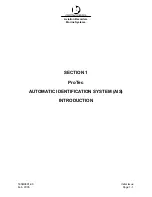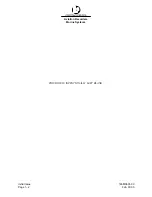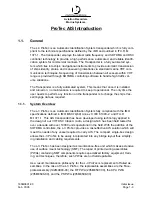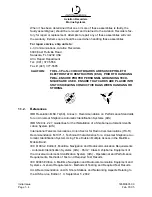
Marine Systems
Aviation Recorders
Page 1–15
Initial Issue
165M0601-00
Feb. 01/05
The Pilot input/output port defined by IEC 61193-2 for connections of ship’s pilot
equipment shall, if fitted, be connected using the pilot port cable, p/n: 024M0099-03.
The Pilot input/output port meets the requirement of IEC 61162-2 and is terminated
as shown in Table 1–4.
Table 1–4. Pilot Port Pinout
J1 Pin
Name
Description
Pair Color P2 Pin
1
PILOT_TXA
RS4–22 Compliant Output A
Blue
2
2
GND
Signal/Power 0 Volt Reference
Black
5
3
+ 8V
+ 8.0 Volt (
5%) Output Used to Power External
Test Equipment. External Equipment should be
Current Limited to 300mA
4
PILOT_TXB
RS–422 Compliant Output B
Black
7
5
PILOT_RXA
RS–422 Compliant Input A
Green
8
6
PILOT_RXB
RS–422 Compliant Input B
Black
3
7
TRACE/BOOT_TX
TTL–Level RS–232 Serial Output (Trace Message/
Bootload Output)
8
RX_SINAD
TDMA / DSC FM Discriminator Output used to
Test Receiver Performance during Special Test
Modes.
9
NO CONNECT
Not Used
NOTE:
Some early transponders had incorrect Pilot Port wiring.
See factory for more details.
1.4.4.
Long Range Equipment Interface
The range of operation of standard AIS is limited to the range of VHF transmissions
which is around 30 miles. The Long Range mode is intended to allow the exchange
of ships position information from ship to a competent authority via a satellite inter-
face such as Inmarsat-C which is already onboard many ships. This port is intended
to interface with the Long Range equipment.
The Long Range reply can be set in either:
F
automatic mode (AUTO)
F
manual mode L-3 ProTec (MANUAL)
F
manual mode external application (EXT APPL).
The Long Range reply, when in AUTO mode, is made as soon as a request is re-
ceived on the Long Range communication port.
















































